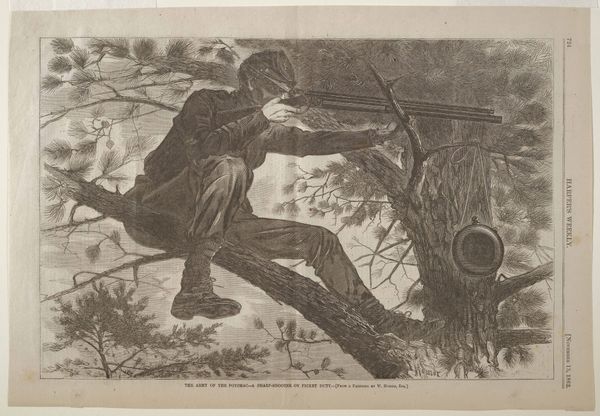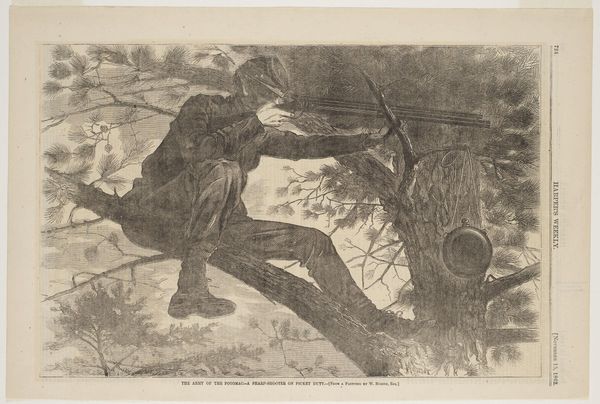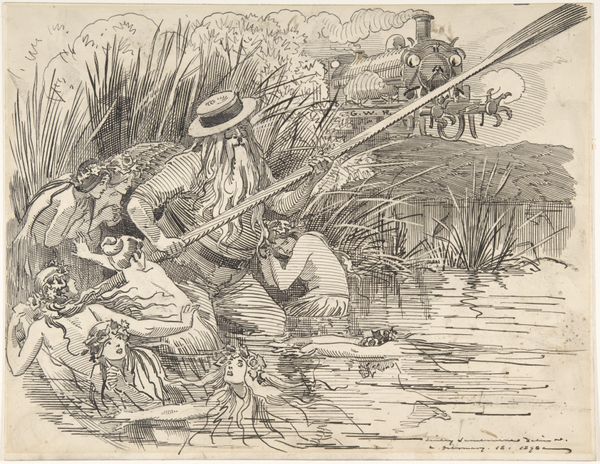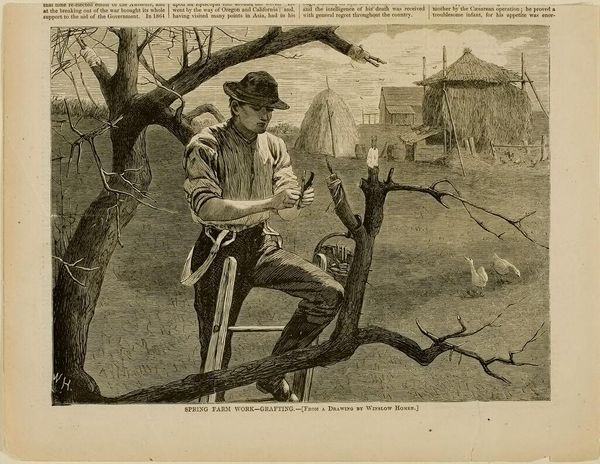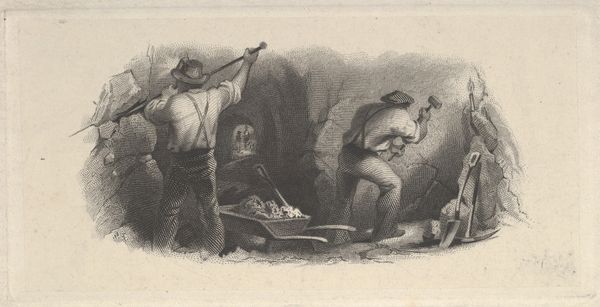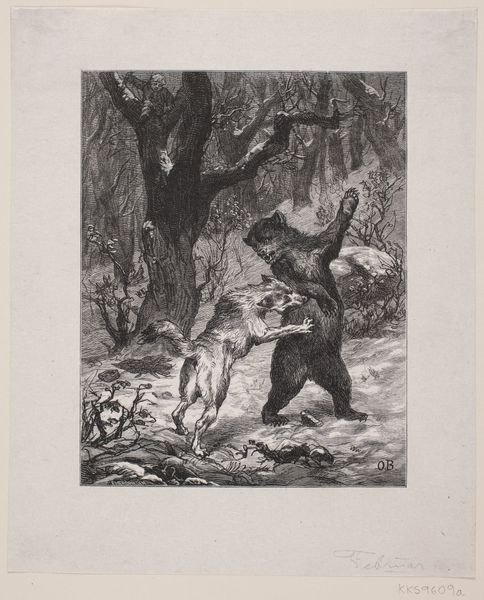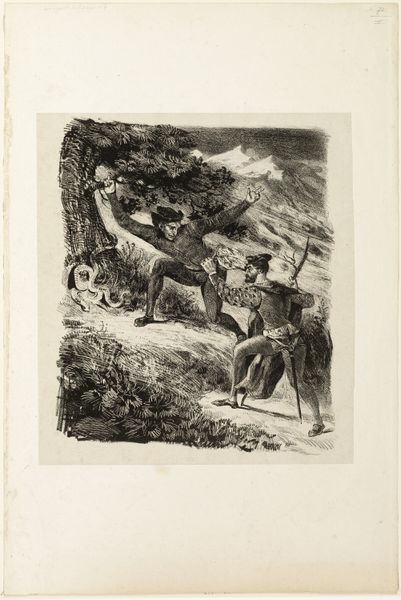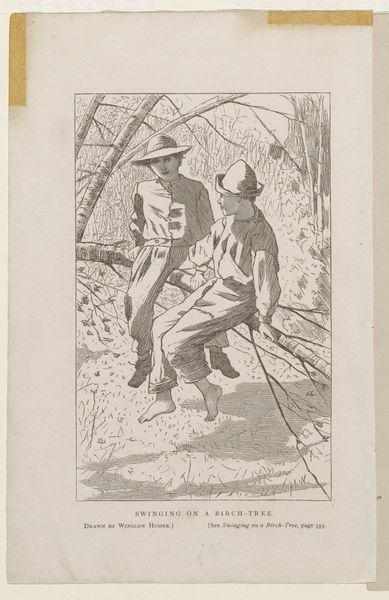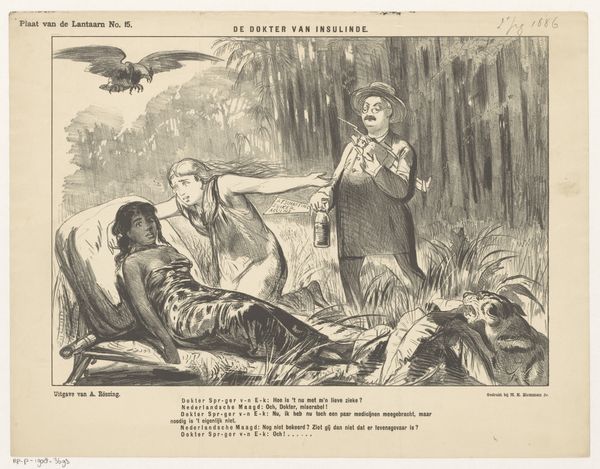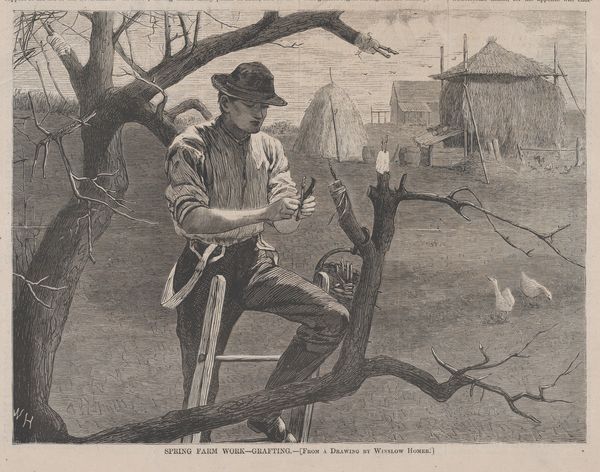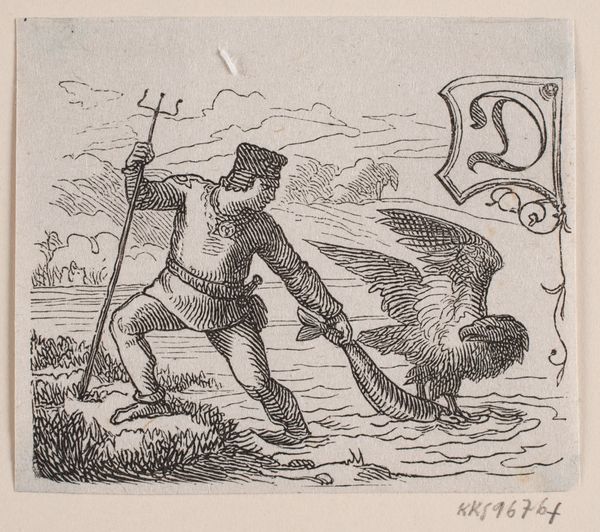
The Army of the Potomac – A Sharp-Shooter on Picket Duty (from "Harper's Weekly," Vol. VII) 1862
0:00
0:00
drawing, print, etching, photography, graphite, engraving
#
drawing
# print
#
etching
#
war
#
photography
#
soldier
#
men
#
graphite
#
engraving
Dimensions: image: 9 1/8 x 13 3/4 in. (23.1 x 35 cm) sheet: 10 11/16 x 16 1/8 in. (27.2 x 40.9 cm)
Copyright: Public Domain
Editor: We're looking at "The Army of the Potomac – A Sharp-Shooter on Picket Duty" by Winslow Homer, dating to 1862. It's a print, an engraving featured in Harper's Weekly. The stark monochrome and the tense pose of the soldier create such a feeling of anticipation. What stands out to you about this piece? Curator: It is important to see this work in terms of the massive increase in print media and photography. Consider the accessibility that illustrated newspapers provided, circulating images of war, like this one, to a wide audience. How did this kind of mass production impact public perception and the romanticism, or de-romanticism, of warfare? Editor: That’s interesting, I hadn’t considered the distribution aspect. It feels so immediate. Did this new form of media alter the creation of art itself? Curator: Absolutely. Think about the wood engravers involved. They weren’t simply copying; they were interpreting and mediating Homer's vision for a mass audience. What effect do you think the standardization of printing processes had on artistic styles? How did the use of photography, drawing, and graphite influence this printmaking process and the consumption of the image? Editor: I guess it forced artists to adapt. To think about appealing to broader audiences and how their work might be received. I’m realizing that there were so many people involved in the consumption of this one image. Curator: Precisely. The focus shifts from the sole "genius" artist to a complex web of production, labor, and viewership. We begin to understand this work not as a singular creation, but as the product of an industrialized system shaping cultural understanding of events. Editor: I’ve never thought about it that way, that the medium changes our interpretation. That’s definitely a new way to approach art for me! Curator: Indeed, it encourages us to consider the materiality and the modes of consumption. Hopefully, we can challenge traditional art historical narratives by understanding them.
Comments
No comments
Be the first to comment and join the conversation on the ultimate creative platform.
